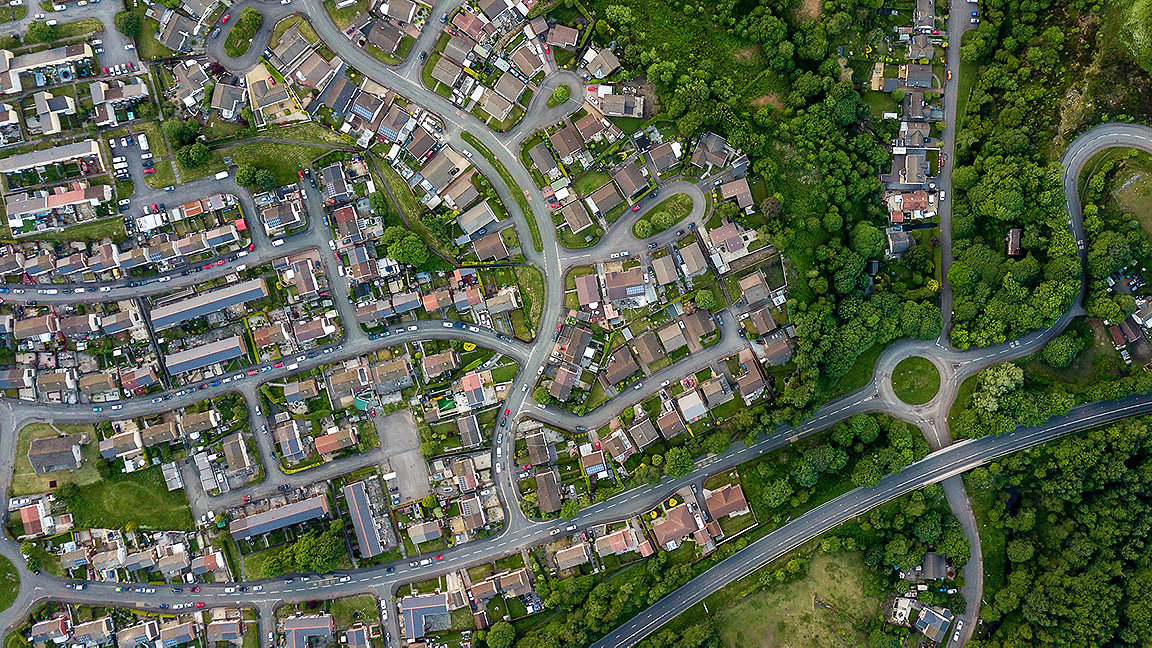
If cement were a country, it would be the third largest emitter of carbon in the world. So it is vital that the construction industry gets to grips with measuring carbon in all forms.
The International Cost Management Standard (ICMS 3) was published in November. A high-level international standard, it brings together a standardised reporting format for carbon metrics – a first for the industry globally.
ICMS 3 comes out of a collaborative endeavour that has been ongoing for seven years. Meeting at the International Monetary Fund building in Washington DC in June 2015, 49 professional bodies from around the world formed a coalition and standard-setting committee, which I now chair, to develop the first edition of ICMS.
Expanding range of costs considered
ICMS 1 was published in November 2017 and essentially covered capital construction costs. This was a first in terms of standardising a reporting system for cost management around the world.
There are of course detailed measurement methods in different markets around the world for quantity surveying and cost engineering. The idea was the ICMS would bridge those different methods of measurement rather than replacing them. In other words, it's never been a method of measurement in terms of its detail; it's always been a high-level cost reporting system, which can help predict benchmarking costs for projects in buildings and civil engineering alike.
We then extended that concept in ICMS 2, published in November 2019, to incorporate life-cycle costing using the standard taxonomy of construction, renewal, operation, maintenance and end-of-life costs (CROME), criteria recognised worldwide.
CROME encompasses the life cycle costs of a project. But we also include acquisition costs, because these are often important for a client and there needs to be a systemised reporting structure for them as well.
Establishing a carbon measurement method
The third edition takes us into sustainability. This is not just a construction matter, as can be seen from the worldwide initiatives discussed at COP26 in November. It is a major issue in terms of corporate balance sheet reporting around the world.
The accountancy profession is also trying to standardise methods that factor carbon emissions and sustainability into balance sheet reporting. Around the world, many other NGOs and bodies, such as the World Green Building Council, have also been considering this problem. The latter published a report on embodied carbon that laid bare the issues with the carbon inherent in the production of materials for use in construction. But in terms of construction, ICMS 3 marks the first attempt to devise a common, standardised system for measuring carbon on construction projects.
The information generated by the standard will allow the trade-offs that occur between cost and embodied carbon in project development and initiation to be considered and optimum decisions to be made. A lot of efforts to date to account for embodied carbon, though, have only been concerned with design decisions. Generating quantities to calculate the carbon from a material element can only be done when you've got a full design.
As well as embodied carbon, carbon is generated in building operations and on site (for example, by diesel plant and machinery) as well.
Another high-level aim for ICMS 3, therefore, was to try to get the data that would allow construction projects to be benchmarked at an earlier stage than full design. So, it made sense to put the carbon metrics in the same taxonomy as those for cost.
'ICMS 3 marks the first attempt to devise a common, standardised system for measuring carbon on construction projects'
How benchmarking enables timely decisions
To do so, however, end users will have to make tough decisions about how much they're spending on projects compared with the amounts they pay for sustainability and reducing carbon. Such decisions, of course, need to be taken at the early stage of construction, alongside those about, perhaps, building nothing, building less, or building smarter by reducing the amount of carbon in the early design process.
This is another reason to use a high-level benchmarking system for carbon reporting. At the moment, it tends instead to be a bottom-up process, based on the amount and kind of material using suppliers' product declarations. This is why quantity surveyors are sometimes asked by architects to generate material quantities from a full design, so the client can be advised on embodied carbon calculations.
ICMS is instead a top-down method of benchmarking. Therefore, we need to be able to put these two approaches together, so we get data sophisticated enough to let us look at projects at the early stage. This will allow us to assess whether the building's orientation or morphology is correct, for instance, to achieve the biggest carbon reduction.
The standard also allows you to look at the common trade-offs in early design decisions with the correct management information. For example, double and triple glazing. We know that triple glazing is the most energy-efficient, but it also has the highest carbon content. While double glazing contains less carbon it is not as energy-efficient; but it is also much cheaper. Deciding which to use is quite difficult without the right carbon and cost management information, which ICMS aims to provide.
If you start measuring embodied carbon, operational carbon, and making decisions at early stages in this way, this will encourage innovation in materials. While we've seen a lot of innovation in terms of low-carbon concrete and steel, when you measure something and take decisions at the early stage of projects that affect material selection, this will promote an even greater degree of innovation.
Common standard for comparison and compatibility
Another important point about ICMS is that it bridges the artificial division between cost management for buildings and for infrastructure.
We found that in some markets, people like to use ICMS as a common method for comparing different entities in the same as well as different sectors. If for example you wanted to compare the cost of a bridge on a road scheme with a bridge on a railway scheme, ICMS is the perfect system for doing so. Otherwise, in the UK at least, you would probably be using the different standards and so making the comparison would be difficult.
ICMS can also interface with more detailed measurement methods, such as RICS' New Rules of Measurement (NRM), or other comprehensive approaches such as the Civil Engineering Standard Method of Measurement. NRM has recently been updated and now includes mapping to ICMS.
ICMS itself is not as detailed as these, but it does allow mapping between them. Similarly, it has also been mapped to design classifications such as Uniclass, among others. The idea is that clients can have a report that shows them not only the cost breakdowns in accordance with ICMS but also the associated carbon breakdowns.
When we decided to extend ICMS into carbon measurement and metrics, we were aware that a lot of work has already been undertaken in terms of carbon assessment standards. In particular, some of you will be aware of BS EN 15978: 2011 Sustainability of construction works. Assessment of environmental performance of buildings. Calculation method, which the RICS Whole life carbon assessment for the built environment professional statement uses to show how to perform carbon calculations.
As ICMS is a reporting system, it does not cover how you calculate carbon, because we expect this to be dealt with in slightly different ways from market to market. However, RICS is going to update its professional statement in carbon assessment this year to align with ICMS 3. This will help the chartered surveying profession calculate and then report carbon in a structured way.
The BECD carbon database will also be relaunched in February in collaboration with RIBA, CIOB and other bodies. We hope that this will provide a repository for data that comes from ICMS and other reporting in a single place, making it available by all professionals. This will be a useful resource when making those early design decisions as well.
Ongoing opportunities
As ICMS carbon metrics are going into an existing market, we need to show how the standard works in that market. But it's also important to take thinking about carbon assessment away from the design process, because it's an opportunity for cost managers and surveyors to become more involved. RICS research shows that carbon assessment is generally performed by designers at present, in many cases using pro forma calculation tools that are tied to building information models.
ICMS 3 offers various templates that can be used by professionals to present the carbon calculations as well as cost calculations. These can be put alongside each other to show the trade-offs between them. The standard also provides template spreadsheets for download. Once a professional has read and understood ICMS 3, it should be relatively easy for them to offer such carbon measurement services to clients.
The standard is an opportunity for surveyors and cost engineers to become more involved in the effort to achieve net-zero carbon. To make progress with this and some of the construction industry's carbon commitments, we need more engagement from the mainstream surveying professions (building surveying, quantity surveying and project management) rather than having it seen as some kind of niche activity.

